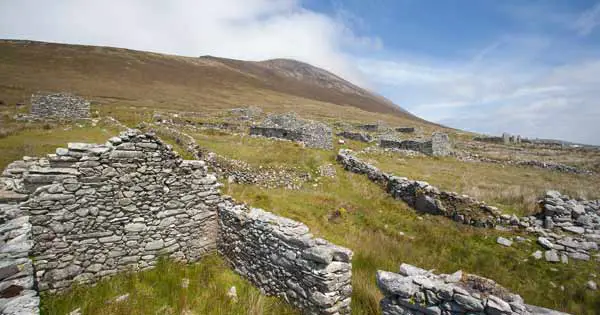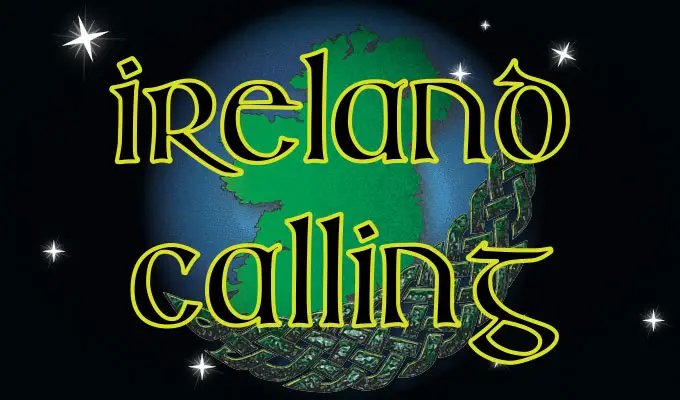This deserted village on Achill Island on the west coast of Ireland is a lonely reminder of the most tragic event in Irish history…the Great Hunger of the 1840s…the Great Famine…sometimes referred to as the Irish Holocaust, such is the emotion it evokes.
A million people died when the potato crop failed and other food supplies that could have saved them were shipped out of the country by greedy landlords. A million more people had to emigrate or face death from starvation.
It was an event that decimated Ireland and wiped out entire communities. This village on Slievemore was once home to a hundred families. They would have been self-sufficient, growing their own crops and getting fish and other seafood from the nearby Clew Bay.
For hundreds of years the village was filled with the sound of men and women at work, and children at play. All that changed with repeated failures of the potato crop between 1845 and 1852.
With the main food source gone and British government unwilling to offer any meaningful help, the people of Ireland faced a huge fight for survival.
By the time the worst of the famine was over, most of the villagers on Slievemore had either died or emigrated to seek a new life in countries like the United States and the UK.
It’s a story that was repeated thousands of times all over Ireland.
Although the village was abandoned as a permanent residence the houses were occupied part time for many years under the booley system. This referred to the practice once popular all over Europe whereby people moved their livestock to graze on the higher ground during the warmer months.
This meant the houses in the Deserted Village would be occupied as temporary homes during the summer with the villagers then returning to their permanent homes in the autumn. The booley system died out in the 1940s and the houses have been abandoned ever since.
Archaeologists say there have been human settlements on Slievemore since the Stone Age. The deserted village is thought to date to the 12th century, although the houses would have been rebuilt and modified over the centuries.
Thousands of people visit the village every year…for most it’s a very moving experience as they quietly contemplate the tragedy that struck their ancestors all those years ago and still resonates in the Irish consciousness right up to this day.
Be a friend of Ireland Calling
Falling income due to Covid is threatening our ability to bring you the best articles and videos about Ireland. A small monthly donation would help us continue writing the stories our readers love. As a thank you, we’ll email you a free gift each month you donate.
More Famine Videos
The Irish Famine – the Great Hunger
More than a million people died and another million emigrated because of the famine in Ireland in the late 1840s. But it wasn’t just a natural phenomenon. Increasingly, it is being seen as genocide by incompetent and callous government officials.
An English View of the Irish Famine
English TV reporter Mike Nicholson wanted to write a book showing that the British government had been unfairly blamed for causing the deaths of a million people by mishandling the Irish famine. But the more he researched what happened, the more he changed his mind.
Tom Guerin – the Boy Buried Alive
Tom Guerin was only three years old when he was buried alive in a mass grave in Abbeystrewry near Skibbereen. Such mistakes were not uncommon in hastily arranged burials during the famine in Ireland in the 1840s.
Why Food Was Exported During the Famine
The potato crops may have failed yet Ireland was producing vast amounts of other food that could have been used to save the dying. Instead, it was shipped out of the country to be sold for profit in England.
The Doolough Tragedy Video
During the Irish Famine, hundreds of desperate, starving people were forced to walk 12 miles through the cold and rain at night to get help. Many died on the way.


